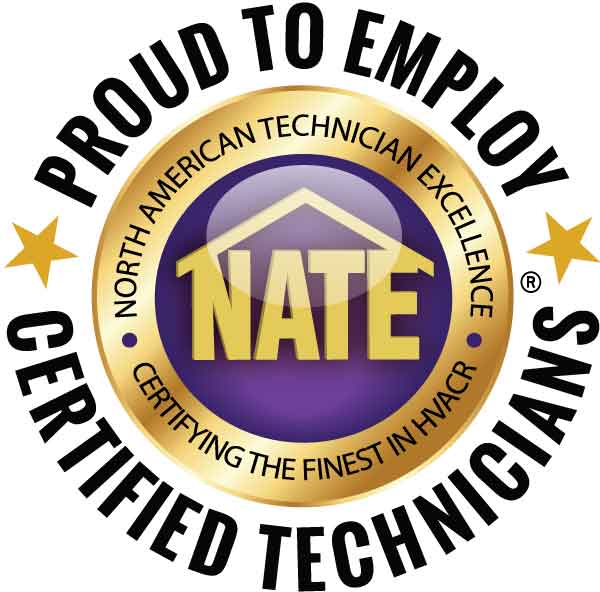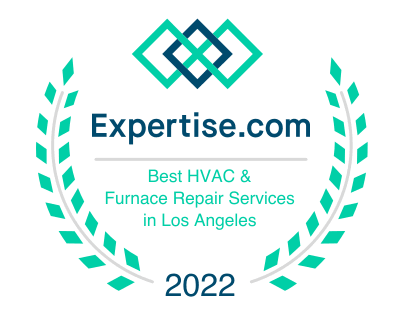
The transition to A2L refrigerants isn’t just about regulatory compliance—it represents a major step forward in the fight against climate change. The A2L Federal Refrigerant Mandate plays a critical role in reducing the global warming potential (GWP) of refrigerants used in HVAC systems, and it aligns with broader climate goals, both in the United States and globally.
This post explores the environmental and climate benefits of the A2L mandate and why adopting these refrigerants is essential for a more sustainable future. This is the fourth post in our series on the A2L Federal Refrigerant Mandate. If you’re new to the series, check out our previous posts, starting with Understanding the A2L Federal Refrigerant Mandate—An Overview.
What Is the Environmental Impact of Traditional Refrigerants?
For years, many HVAC systems have relied on hydrofluorocarbons (HFCs) like R-410A and R-134a as refrigerants. While these chemicals are highly effective at cooling and maintaining comfortable indoor environments, they come with a significant environmental cost.
HFCs have a high GWP, meaning they trap heat in the atmosphere much more effectively than carbon dioxide (CO2). In fact, some HFCs can be thousands of times more potent as greenhouse gases compared to CO2. When these refrigerants leak into the atmosphere (either during HVAC system operation or at the end of the system’s lifecycle), they contribute disproportionately to global warming.
Key problems associated with high-GWP refrigerants include:
- Increased greenhouse gas emissions: HFCs are major contributors to the global increase in greenhouse gas levels.
- Damage to the ozone layer: Older refrigerants, such as chlorofluorocarbons (CFCs), also depleted the ozone layer, though modern HFCs do not. However, the global warming impact of HFCs remains significant.
How A2L Refrigerants Help Reduce Environmental Impact
A2L refrigerants, such as R-32 and R-454B, are classified as low-GWP refrigerants, meaning they have a much smaller impact on the environment compared to traditional HFCs. The adoption of A2L refrigerants represents a major step toward reducing the carbon footprint of HVAC systems.
Key Environmental Benefits of A2L Refrigerants:
- Low Global Warming Potential (GWP)
- A2L refrigerants have significantly lower GWPs than older HFCs like R-410A. For example, R-32 has a GWP of around 675, compared to R-410A’s GWP of over 2,000. This reduction means that even if a leak occurs, A2L refrigerants contribute much less to global warming.
- Energy Efficiency
- A2L refrigerants tend to be more energy-efficient, meaning HVAC systems that use them often consume less electricity. This reduced energy demand translates into lower carbon emissions from power plants, further reducing the overall environmental impact.
- Compatibility with Modern Climate Goals
- The switch to A2L refrigerants aligns with international agreements like the Kigali Amendment to the Montreal Protocol, which calls for a global phase-down of HFCs. By adopting A2L refrigerants, the U.S. and other countries are meeting their climate commitments and reducing their contributions to global warming.
- Reduced Refrigerant Leakage
- While no refrigerant is completely leak-proof, newer systems designed for A2L refrigerants often include advanced leak detection systems and improved containment strategies. This means that less refrigerant escapes into the atmosphere, reducing overall emissions.
Supporting Global Climate Initiatives
The A2L Federal Refrigerant Mandate is not happening in isolation—it’s part of a broader movement toward climate change mitigation. The HVAC industry’s transition to A2L refrigerants supports global efforts to limit temperature rise and avoid the most severe consequences of climate change.
1. The Kigali Amendment and Global Refrigerant Policy
The Kigali Amendment to the Montreal Protocol is an international treaty that aims to reduce the production and consumption of HFCs globally. It has been adopted by more than 100 countries, including the United States. By reducing the use of high-GWP refrigerants, countries can significantly reduce their contribution to global warming.
The A2L mandate is a direct result of this global initiative. Phasing out high-GWP refrigerants and adopting more sustainable alternatives like A2L refrigerants helps the U.S. meet its climate commitments and set an example for other nations.
2. Contribution to Lower Greenhouse Gas Emissions
The HVAC sector accounts for a significant portion of global energy use and greenhouse gas emissions. By transitioning to low-GWP refrigerants and more efficient HVAC systems, the industry can play a critical role in reducing overall emissions.
According to the Environmental Protection Agency (EPA), the transition to low-GWP refrigerants is expected to avoid the equivalent of 3 billion metric tons of CO2 emissions globally by 2050. This reduction is comparable to taking millions of cars off the road and is essential for limiting the global temperature increase to 1.5°C—the goal of the Paris Agreement.
3. Encouraging Innovation in Sustainable HVAC Solutions
The shift to A2L refrigerants is driving innovation within the HVAC industry. Manufacturers are developing more energy-efficient systems that use environmentally friendly refrigerants, and new technologies are emerging to enhance the safety and performance of these systems.
In addition to reducing emissions, these innovations are helping homeowners and businesses save money on energy bills, further incentivizing the transition to A2L-compliant systems.
Long-Term Environmental Benefits
The adoption of A2L refrigerants isn’t just a short-term solution—it represents a long-term shift toward sustainability. As HVAC systems continue to evolve, the environmental benefits of these changes will compound, leading to a cleaner and more sustainable future.
Key Long-Term Benefits:
- Lower Cumulative Emissions: As A2L refrigerants become the norm, the overall contribution of HVAC systems to global greenhouse gas emissions will decrease, helping countries achieve their long-term climate goals.
- Improved Air Quality: With fewer refrigerant leaks and more efficient systems, the air quality in both indoor and outdoor environments is expected to improve, reducing the harmful effects of pollutants and contributing to better public health.
- Sustainability Leadership: By adopting low-GWP refrigerants, businesses and homeowners are contributing to global efforts to combat climate change and supporting the transition to a more sustainable economy.
Conclusion
The A2L Federal Refrigerant Mandate is more than just a regulatory requirement—it’s a crucial step toward reducing the environmental impact of HVAC systems and addressing global climate change. By transitioning to A2L refrigerants, we can significantly reduce the carbon footprint of heating and cooling systems, improve energy efficiency, and support global climate initiatives.
In our next blog post, How the A2L Mandate Impacts Homeowners—What to Expect, we’ll explore what homeowners need to know about the A2L mandate, including how it may affect their HVAC systems and the potential benefits they can expect.
Call to Action:
Ready to make your HVAC system more environmentally friendly? Stay tuned for the next post in our series, where we’ll discuss how the A2L mandate impacts homeowners and what you can do to prepare for the transition.
Contact SoCal Climate Control Heating and Air Conditioning
For personalized advice or assistance with any HVAC needs, reach out to SoCal Climate Control Heating and Air Conditioning at (833) 202-0763. We’re here to ensure your system is running smoothly and effectively, providing comfort for years to come.











